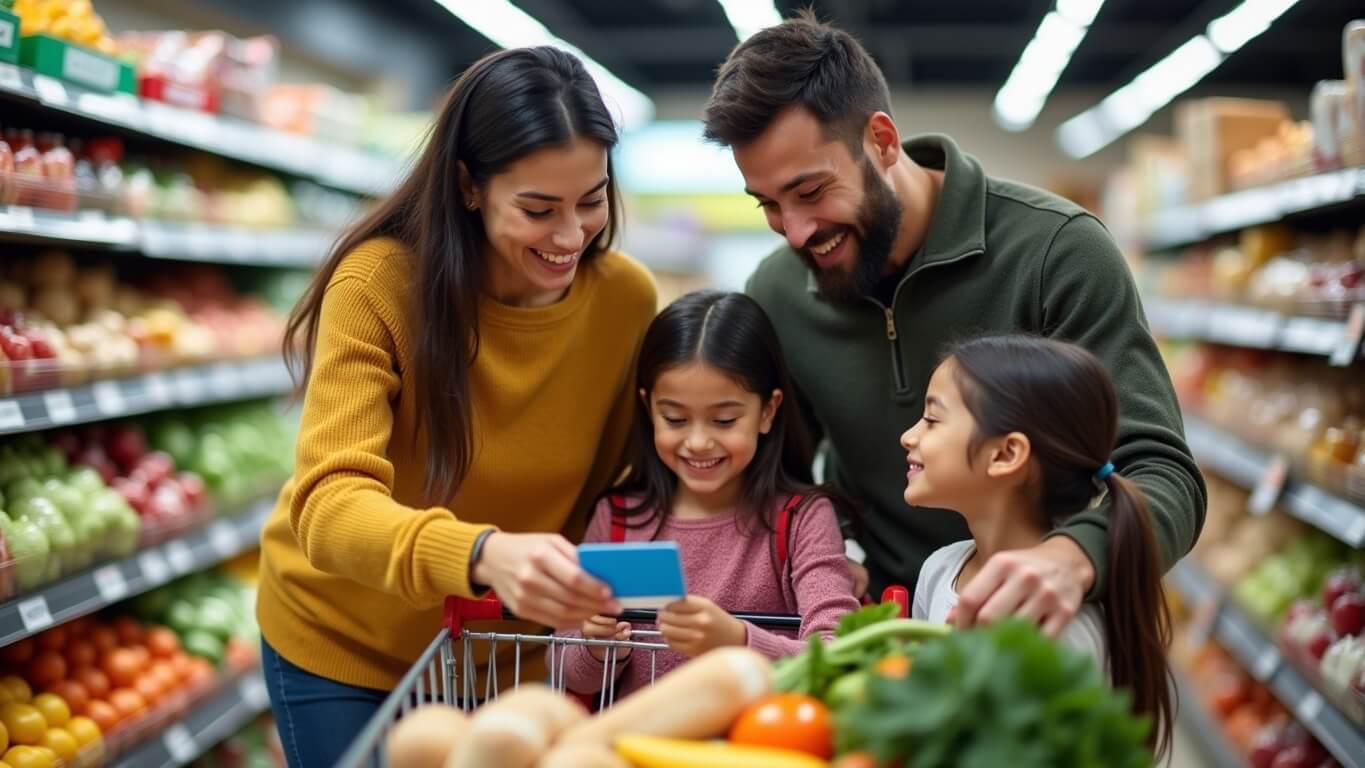The Supplemental Nutrition Assistance Program, or SNAP, helps people with low incomes buy food. You might know it as EBT, which stands for Electronic Benefit Transfer. But what can you actually buy with an EBT card? Can you get things besides groceries? This essay will break down what you can and can’t purchase with your EBT benefits and answer the question: Can You Buy Non-Food Items With EBT?
What You Can’t Buy: The Basics
Let’s get straight to the point. You cannot use your EBT card to buy non-food items. SNAP is specifically designed to help people afford groceries and other edible items that keep them healthy. That means things like toiletries, paper products, pet food, or alcohol are off-limits. It’s all about putting food on the table.

Understanding Eligible Food Items
So, what *can* you buy? Well, a whole bunch of things that are meant to be eaten or used to make food! Think of it this way: if it’s a food product, it’s usually good to go. This includes fresh fruits and vegetables, meats, poultry, fish, dairy products, and grains. You can also purchase seeds and plants that produce food.
Here’s a quick breakdown:
- Fruits and Vegetables: Apples, bananas, broccoli, etc.
- Meats: Chicken, beef, pork, fish, etc.
- Grains: Bread, pasta, rice, etc.
- Dairy: Milk, cheese, yogurt, etc.
This gives you a good idea of what’s generally considered an eligible food item. Remember to look for the items that are labeled to be food.
You can also buy certain snack foods, like chips and candy, even though they aren’t the healthiest choices. You are also able to buy non-alcoholic beverages.
The Reason Behind the Rules
Why are there restrictions on what you can buy with EBT? The main reason is the program’s goal: to combat hunger and improve nutrition for low-income individuals and families. By limiting the use of EBT to food items, the government ensures that the benefits are being used for their intended purpose.
This focus also helps to keep the program’s costs down. If you could buy anything with an EBT card, it would be harder to track spending and prevent misuse. Also, the government wants to make sure people are eating and using the funds for food rather than for other things.
The rules are put in place to prevent fraud. This helps maintain the integrity of the program and makes sure that funds are going where they are needed most: on the table.
Finally, food is a basic human need. This ensures that people using the benefits have food.
Exceptions and Special Cases
While EBT primarily covers food, there are some exceptions and special cases where things get a little less clear. For example, in some states, you might be able to use your EBT card at certain restaurants if you are elderly, homeless, or disabled, through a program called Restaurant Meals Program (RMP).
Here’s some information about the Restaurant Meals Program:
- Only available in certain states.
- Designed for those who can’t easily prepare meals.
- Allows EBT cards to be used at participating restaurants.
- Specific restrictions on the types of restaurants and meals.
Also, you can buy certain items that seem like non-food items, but are considered essential, like bottled water in areas with unsafe water. These situations are rare, and depend on the area in which you live.
These exceptions show that SNAP is not a one-size-fits-all program. The rules are flexible.
What About Other Programs?
EBT is just one part of the social safety net. There are other programs that might help you with non-food necessities. For instance, some people are able to use EBT cards to help with the purchase of medical items such as medical supplies.
Here’s a small comparison:
| Program | Focus |
|---|---|
| SNAP (EBT) | Food purchases |
| WIC | Food for women, infants, and children |
| TANF | Cash assistance for families |
These other programs provide assistance with different needs. This ensures people have what they need to thrive.
Also, local charities and food banks often offer free non-food items, such as hygiene products and cleaning supplies. These resources can help families meet their basic needs even when EBT benefits are limited to food purchases. These local programs help.
Where Can You Use Your EBT Card?
You can use your EBT card at most grocery stores, supermarkets, and farmers markets. You will also be able to use it at some specific locations. The place has to be certified by the USDA to accept EBT.
Here are some examples:
- Supermarkets and Grocery Stores: Large chain stores.
- Farmers Markets: Buying fresh, local produce.
- Some Convenience Stores: Depending on the store’s certification.
- Online Retailers: Many retailers now accept EBT for online grocery orders.
You can usually identify whether a store accepts EBT by looking for a sign that says “EBT Accepted” or a similar notice.
Finally, it’s important to know where you can use your card.
The Importance of Budgeting
Since you can’t buy everything with EBT, it’s important to budget and prioritize your spending. Make a list of all of your needs.
Here are some budgeting tips:
- Plan your meals ahead of time.
- Make a grocery list and stick to it.
- Compare prices and look for sales.
- Shop at stores that accept EBT.
These tips can help you use your food benefits wisely and make them last.
Also, budgeting helps families make their benefits go further.
Conclusion
In short, when asking “Can You Buy Non-Food Items With EBT?”, the answer is generally no. EBT is designed for food purchases, which is why you will not be able to buy non-food items. Understanding these rules is key to managing your benefits effectively and ensuring you have the food you need. By knowing the rules, and taking advantage of other resources, you can make sure you and your family are taken care of.